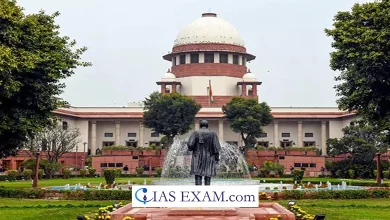
Context
There is a decreasing trend in drop in private investment in recent years which is quite evident from the sluggish acceleration of private Gross Fixed Capital Formation (GFCF) as a proportion of gross domestic product (GDP) at current prices.
About Private Investments
- If a country’s private sector fails to invest in production, innovation, and employment, the economic development of that country will be hindered.
- Among the factors, such as economic conditions, government policies, regulatory environments, and investor confidence, moderating private investments is undoubtedly an operational basis.
- Government can play the role of promoting private investments through the process of facilitating a conducive governing business environment, consisting of the streamlining of regulations and establishment of infrastructure.
What is GFCF & GDP
GFCF
- GFCF is the Product of all Investments made in the Fixed Assets, such as Buildings and Machinery. These Infrastructural Investments Happen When an Economy Seeks to Install New Machinery or Open Up New Factories.
- Public investing is one component of the GFCF (government finance corporation), however another part is the primary market as it possesses income. But, the primary market also appreciates.
- GFCF is important for growth in an economy, it encourages efficiency in production which results in an increase in worker productivity and improvement in the economy as a whole.
- In developed countries, the higher fixed capital per capita ratio, which is typically above than in developing countries like India, is a characteristic feature of advanced economies.
GDP
- GDP in its broadest definition represents the total cost of all the final products and services in the country, measured over a particular time period and thus depicting the level of economic activity and efficiency.
- It is a core metric that makes countries either shrink or grow.
- GDP could be determined as either expenditure or income dependent.
Details about drop in private Investments and its reason
- Investment in the private sector in India was pumping after the economic reforms of the late 1980s and early 1990s and by 2007-08 the percentage of it in terms of GDP was about 27%.
- Even so, from 2011-12 losses in capital expenditure are trending downwards, and hit their highest in 2020-21 amounting to 19.6% of the national gross income.
- The private consumption was pointed out as a root cause of low private investment which does not provide businesses with adequate future demand assurance that could boost the fixed capital investments.
- The structural issues of which the outdated government policies and inconsistent policies also are the causes of the decrease in private investment are also a critical issue.
- The ‘prolonged’ reluctance of the private investment to spark, as shown by the private GFCF as a percent of GDP, is a big challenge to India in terms of economic growth and development.
Conclusion
- A holistic approach for managing the poor quality of private investment would include policy measures geared towards building of consumer’s confidence and providing industrial environments conducive and favourable to businesses.
- The weighing of performing pro-growth monetary measures, and installing the reforms captures the vitality of the economy’s growth and development.
- These kinds of policies are thereby very likely to stimulate further investment activities, the end result being the creation of new business on a national scale.
Source: The Hindu
UPSC Mains Practice Question
Q.Discuss the significance of private investment in driving economic growth and explore policy measures that India can undertake to address the decline in private investment.





.png)



